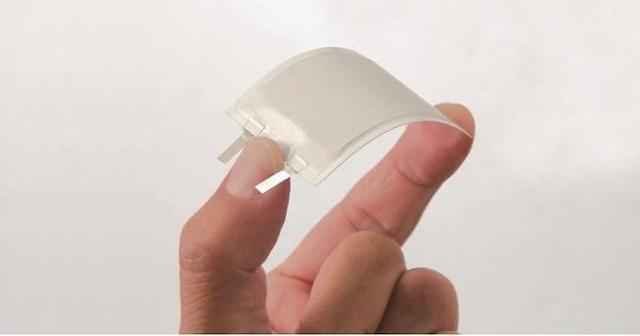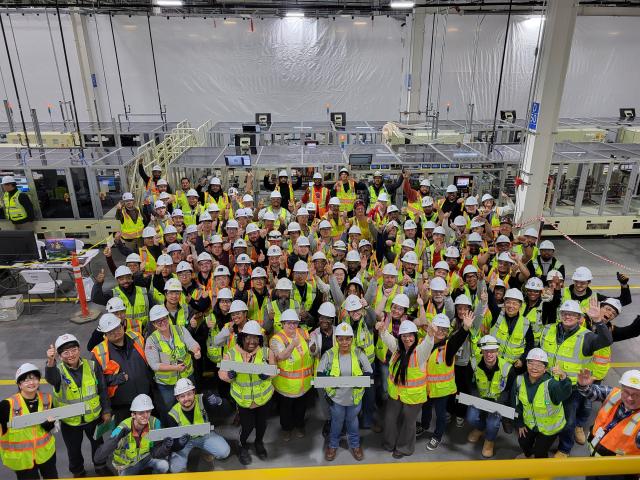
[Courtesy of Panasonic]
Japanese electronics company Panasonic has introduced its flexible lithium-ion battery, joining the ranks with global leaders like Samsung and LG which have accelerated the development of flexible batteries as their new growth engines.
In its announcement on Thursday, Panasonic said its flexible rechargeable battery can bend up to a radius of R40 millimeters and bear a twisting angle of ± 15 degrees. It can be repeatedly bent and twisted. The 0.55-millimeter (0.022 inches) thin battery can be used in wearable devices and electronic card-like payment systems.
The first shipment of Panasonic's bending batteries is slated for the end of October, and Panasonic said it would try to make its product even slimmer.
Demand for flexible batteries is rising thanks to the fast-growing market for wearable devices. Because they are so versatile due to its lightweight and bending characteristics, flexible batteries can be widely used from smartwatches to smart jackets.
US market researcher International Data Corporation predicted the worldwide shipment of wearable devices would reach 101.9 million units by the end of 2016, up 29 percent from a year ago. It also said the market would see a compound annual growth rate of 20.3 percent until 2020.
Panasonic is the latecomer in the market dominated by Samsung SDI and LG Chem which have already developed and applied flexible battery technologies to their products. Samsung introduced the "world's first truly flexible" battery at the InterBattery 2014 Convention while LG Chem developed its long, thin wire-shaped battery in 2013 and unveiled it at the InterBattery show in 2015.
Samsung installed its flexible battery into the curved body of its latest fitness wearable device Gear Fit 2. Last year LG introduced band and hexagonal batteries fitted together into the band and body of smartwatches, nearly doubling battery capacity compared to other smartwatches which only have a battery in the body.
Competition is also coming from Chinese battery makers led by Beijing-based Dongxu Optoelectronic which took a step forward ahead of its rivals in the flexible battery war in July 2016. Dongxu introduced a flexible graphene battery for the first time in the world, and its 4800mAh sized graphene battery charges up 24 times faster than a normal lithium-ion battery of the same size. However, it is still in its development stage.
Graphene, an atom-thick sheet of carbon, is 200 times stronger and six times lighter than steel. It could be layered or folded to form an electrode material just like lithium-ion batteries.
Many experts see tough competition in the whole battery market as producers focus on developing and commercializing lighter, smaller and more efficient batteries.
Now, lithium-ion batteries are widely used because they are lighter than nickel-cadmium (NiCd) or nickel metal hydride (NiMH) batteries. A lithium-ion battery has characteristics of higher energy density and low self-discharge, making it ideal for portable devices, and it has become a common replacement for lead-acid batteries used in electric cars due to its lightweight.
However, lithium-ion batteries are more dangerous and vulnerable to impact and external forces so that they can catch fire and explode.
Aju News Park Sae-jin = swatchsjp@ajunews.com




